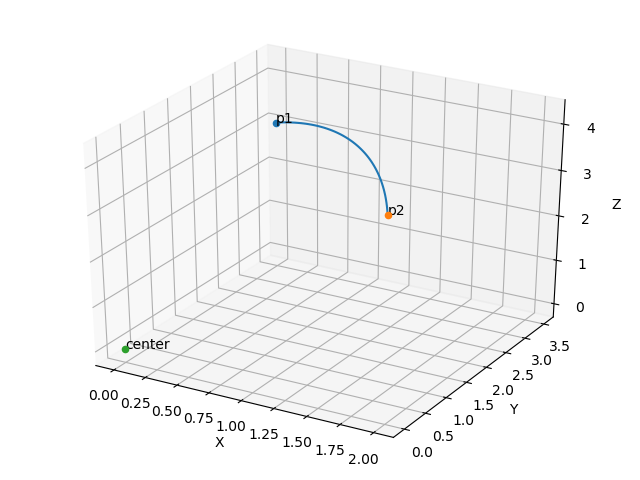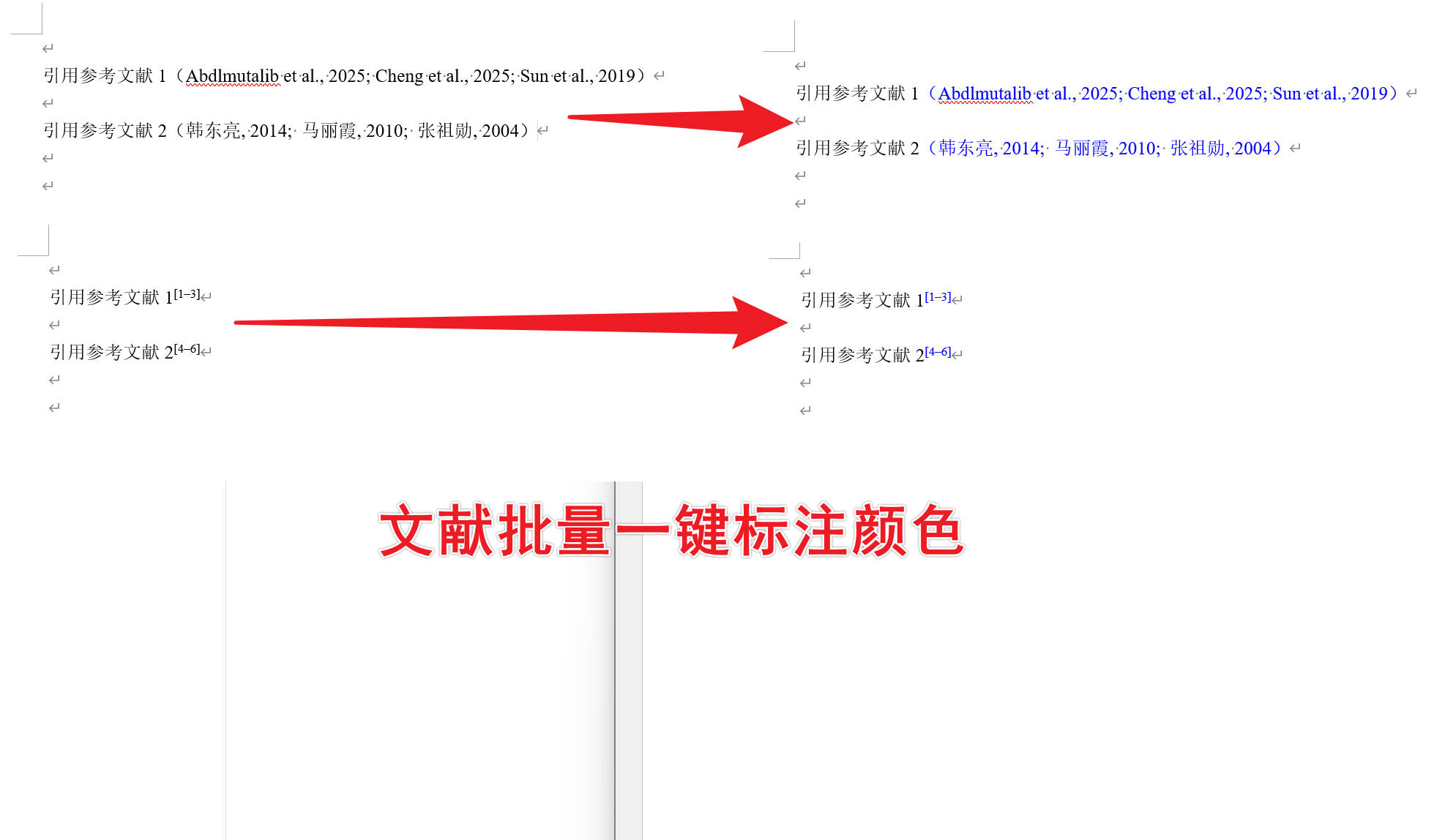通过圆弧的圆心及两个端点坐标,绘制圆弧的三维形状。
Introduction
起源于某同学今年打研究生数学建模竞赛。绘制飞机航迹图。
通过中心点坐标c(x,y,z)、端点坐标1p1(x,y,z)和端点坐标2p2(x,y,z),绘制三维圆弧。
起初以为很简单,接锅后发现事情不简单。。。
Method
主要思路为:通过将圆弧端点c,p1,p2旋转到XOY平面,插值后,再旋转回原平面。
主要步骤如下:
- 计算
c, p1, p2 三点共面的平面法向量cp
- 通过平面法向量
cp,计算其与z轴夹角sita及旋转轴roteAxis
- 通过旋转轴
roteAxis和sita计算旋转矩阵roteMatrix和逆向旋转矩阵roteBackMatrix
- 将
c,p1,p2旋转到XOY平面,根据step插值得到弧线点坐标roteArc
- 利用
roteBackMatrix将roteArc旋转到原坐标系, 得到圆弧曲线坐标arc
Code
GitHub
arc.py
1
2
3
4
5
6
7
8
9
10
11
12
13
14
15
16
17
18
19
20
21
22
23
24
25
26
27
28
29
30
31
32
33
34
35
36
37
38
39
40
41
42
43
44
45
46
47
48
49
50
51
52
53
54
55
|
import numpy as np
from scipy.sparse.linalg import expm
import matplotlib.pyplot as plt
from mpl_toolkits.mplot3d import Axes3D
def get_sita(p):
sita = np.arccos(np.dot(np.array((1, 0, 0)), p) / np.linalg.norm(p))
if (p[1] < 0):
sita = np.pi * 2 - sita
return sita
def get_arc_points(center, p1, p2, step=0.01):
center = np.array(center)
p1 = np.array(p1)
p2 = np.array(p2)
R = np.sqrt(np.sum(np.power(p1 - center, 2)))
cp = np.cross(center - p1, p2 - p1)
a, b, c = cp
d = np.dot(cp, center)
cs = np.arccos(np.dot(p1 - center, p2 - center) / np.linalg.norm(p1 - center) / np.linalg.norm(p2 - center))
roteAxis = np.cross(cp, [0, 0, 1])
sita = np.arccos(np.dot(cp, [0, 0, 1]) / np.linalg.norm(cp))
if (get_sita(cp - np.array((0, 0, 1)))) > 0:
sita = -sita
roteMatrix = expm(np.cross(np.eye(3), roteAxis / np.linalg.norm(roteAxis) * sita))
roteBackMatrix = expm(np.cross(np.eye(3), roteAxis / np.linalg.norm(roteAxis) * (-sita)))
P = np.vstack((center, p1, p2))
RP = np.dot(P, roteMatrix)
sp1 = get_sita(RP[1, :] - RP[0, :])
sp2 = get_sita(RP[2, :] - RP[0, :])
if np.abs(sp1 - sp2) > np.pi:
st = np.hstack((np.arange(sp1, 2 * np.pi, step), np.arange(0, sp2, step))) if sp1 > sp2 else np.hstack(
(np.arange(sp2, 2 * np.pi, step), np.arange(0, sp1, step)))
else:
st = np.arange(sp1, sp2, step) if sp2 > sp1 else np.arange(sp2, sp1, step)
arc = np.array((R * np.cos(st) + RP[0, 0], R * np.sin(st) + RP[0, 1], st * 0 + RP[0, 2]))
for i in np.arange(0, arc.shape[1]):
arc[:, i] = np.dot(arc[:, i], roteBackMatrix)
return arc
|
Example
可通过下载 GitHub 上的代码使用该函数, 使用方法如下:
1
2
3
4
5
6
7
8
9
10
11
12
13
14
15
16
17
18
19
| from arc import get_arc_points
import matplotlib.pyplot as plt
P1=[0,1,1]
P2=[1,0,1]
C=[0,0,0]
arc=get_arc_points(C,P1,P2,0.01)
fig=plt.figure()
ax = fig.add_subplot(111, projection='3d')
ax.plot3D(arc[0,:],arc[1,:],arc[2,:])
ax.set_zlabel('Z')
ax.set_ylabel('Y')
ax.set_xlabel('X')
ax.scatter3D(P1[0],P1[1],P1[2])
ax.scatter3D(P2[0], P2[1], P2[2])
ax.scatter3D(C[0], C[1], C[2])
plt.show()
|

Others
Email: ddxid@outlook.com



![[徒步]宁波九龙爱心线](https://i.cuger.cn/b/d3c7f637-f0a4-4cfb-8e2b-23631aaba006.jpg)
![[徒步]仙居公盂徒步+丽人谷溯溪(多图)](https://i.cuger.cn/b/d9792528-29aa-4af0-98b5-979472c57b77.jpg)

![[出差]内蒙草原风光](https://i.cuger.cn/b/0039bc8f-15e8-4039-a286-9fb1d1af9e33.jpg)
![[徒步]浙东小九寨](https://i.cuger.cn/b/4f027072-13ba-4833-b61d-409be4c503f8.jpg)